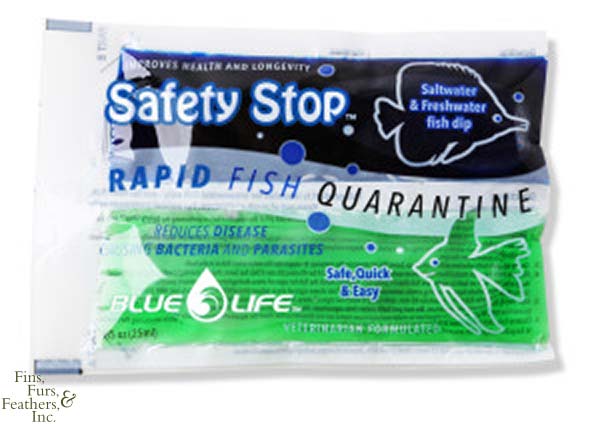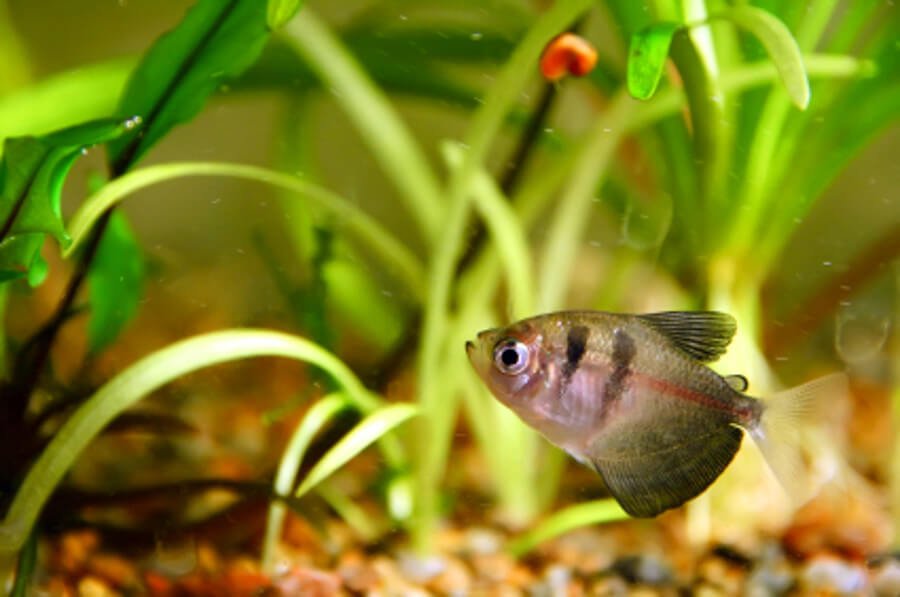revhtree
Owner Administrator
View Badges
Staff member
Super Moderator
Reef Squad
Partner Member 2024
Excellence Award
RGB
Photo of the Month
Article Contributor
R2R TV Featured
Hospitality Award
Article Administrator
Black Friday Sponsor
Partner Sponsor 2023
Industry Professional
My Aquarium Showcase
- Joined
- May 8, 2006
- Messages
- 47,765
- Reaction score
- 87,218
Saw this product and was wondering what you all thought of it?

Here is the product description.
Safety Stop is a simple and effective way to help protect your Saltwater and Freshwater aquarium fish from serious unwanted disease outbreaks caused by external parasites, and bacterial and fungal infections. New fish are often the source of infectious diseases that can wipeout an entire aquarium. Be proactive and give your fish a Safety Stop bath to significantly lower the risk of introducing deadly diseases. Protect your investment!!!
Safety Stop also significantly increases oxygen in a new fishes blood stream minimizing stress and helping to keep the immune system strong!
While there is no substitute for extended quarantine of new fish in a separate hospital tank, often it is not practical. We recommend using Safety Stop before introducing the new fish into your main aquarium or into the quarantine tank. For multiple tank owners, it should be used anytime a fish is transferred from one tank to another including all quarantine tanks.
How to use product:
Take fish from fish store directly home without delay. Acclimate fish to the same temperature and pH of the aquarium before performing the Safety Stop bath.
While fish is acclimating prepare the two baths: into clean, non-metallic containers (i.e., a plastic or glass bucket), add one gallon of water directly from the aquarium into each bucket. With scissors, cut the edge of the product packages and pour PART A into the first container and PART B into the second container Monitor for temperature changes.
Gently agitate both solutions with an air stone. Leave the air stones in the container to oxygenate the water when fish is in the bath.
Remove the fish to be treated from acclimation water and deposit in bath PART A for 45 min (30 min if fish has been shipped overnight within the last 72 hours). Keep a loose cover on bath to make sure fish doesn’t jump out. Carefully watch the fish for signs of stress during the entire treatment process. Signs of stress include heavy breathing, erratic swimming, rolling, etc. If fish shows signs of stress reduce time and put immediately into PART B bath.
After Part A, transfer fish to Part B bath for 45 min. Continuing to watch for signs of stress. If signs of stress occur, remove before treatment is over, and transfer to quarantine tank or prepared aquarium. Do not put bath water into aquarium. After treatment B is over net fish into aquarium.
Observe fish after introduction to tank to make sure tank mates are not disturbing fish. It is good idea to feed the tank simultaneously while introducing the new fish to keep the resident fish occupied. Keep light levels low for 24 hours after introduction. Bath should be discarded after several hours but can be used on multiple fish within a few hours or at the same time.
Warning
This dip protocol is intended for ornamental fish only.
Do not use on invertebrates
Do not use on scale-less freshwater fishes.
Do not use on invertebrates i.e. Corals, urchins, sea stars, snails, crabs
Do not exceed 45 minutes in each bath
Do not use on fish that show obvious signs of sickness.
Solution may stain.
Do not pour dip water into tank
Keep out of reach of children
Avoid contact with skin, eyes and clothing.
Do not injest or breathe vapors.

Here is the product description.
Safety Stop is a simple and effective way to help protect your Saltwater and Freshwater aquarium fish from serious unwanted disease outbreaks caused by external parasites, and bacterial and fungal infections. New fish are often the source of infectious diseases that can wipeout an entire aquarium. Be proactive and give your fish a Safety Stop bath to significantly lower the risk of introducing deadly diseases. Protect your investment!!!
Safety Stop also significantly increases oxygen in a new fishes blood stream minimizing stress and helping to keep the immune system strong!
While there is no substitute for extended quarantine of new fish in a separate hospital tank, often it is not practical. We recommend using Safety Stop before introducing the new fish into your main aquarium or into the quarantine tank. For multiple tank owners, it should be used anytime a fish is transferred from one tank to another including all quarantine tanks.
How to use product:
Take fish from fish store directly home without delay. Acclimate fish to the same temperature and pH of the aquarium before performing the Safety Stop bath.
While fish is acclimating prepare the two baths: into clean, non-metallic containers (i.e., a plastic or glass bucket), add one gallon of water directly from the aquarium into each bucket. With scissors, cut the edge of the product packages and pour PART A into the first container and PART B into the second container Monitor for temperature changes.
Gently agitate both solutions with an air stone. Leave the air stones in the container to oxygenate the water when fish is in the bath.
Remove the fish to be treated from acclimation water and deposit in bath PART A for 45 min (30 min if fish has been shipped overnight within the last 72 hours). Keep a loose cover on bath to make sure fish doesn’t jump out. Carefully watch the fish for signs of stress during the entire treatment process. Signs of stress include heavy breathing, erratic swimming, rolling, etc. If fish shows signs of stress reduce time and put immediately into PART B bath.
After Part A, transfer fish to Part B bath for 45 min. Continuing to watch for signs of stress. If signs of stress occur, remove before treatment is over, and transfer to quarantine tank or prepared aquarium. Do not put bath water into aquarium. After treatment B is over net fish into aquarium.
Observe fish after introduction to tank to make sure tank mates are not disturbing fish. It is good idea to feed the tank simultaneously while introducing the new fish to keep the resident fish occupied. Keep light levels low for 24 hours after introduction. Bath should be discarded after several hours but can be used on multiple fish within a few hours or at the same time.
Warning
This dip protocol is intended for ornamental fish only.
Do not use on invertebrates
Do not use on scale-less freshwater fishes.
Do not use on invertebrates i.e. Corals, urchins, sea stars, snails, crabs
Do not exceed 45 minutes in each bath
Do not use on fish that show obvious signs of sickness.
Solution may stain.
Do not pour dip water into tank
Keep out of reach of children
Avoid contact with skin, eyes and clothing.
Do not injest or breathe vapors.
















